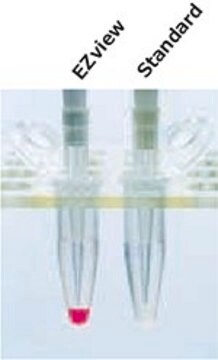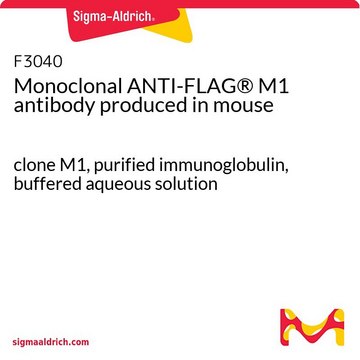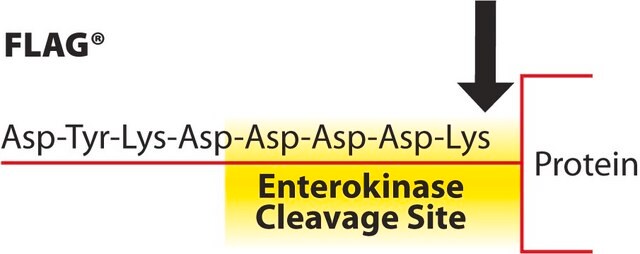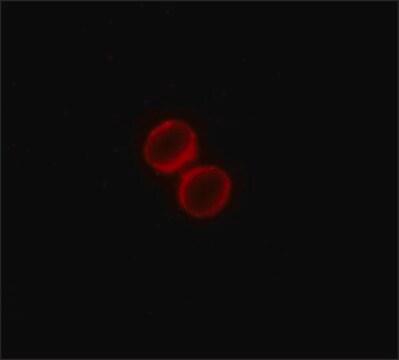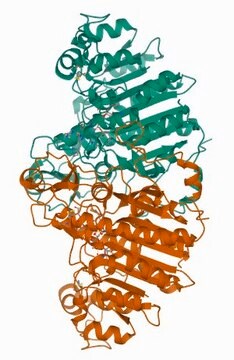A4596
ANTI-FLAG® M1 Agarose Affinity Gel
Synonym(s):
Anti-ddddk, Anti-dykddddk
About This Item
Recommended Products
conjugate
agarose conjugate
antibody product type
primary antibodies
form
suspension
isotype
IgG12b
capacity
≥0.6 mg/mL, gel binding capacity
storage temp.
−20°C
General description
Specificity
N-Asp-Tyr-Lys-Asp-Asp-Asp-Asp-Lys-C
Application
Affinity gel is for calcium mediated purification of N-terminal FLAG fusion proteins.
immunoprecipitation (IP): suitable
Elution - FLAG peptide, Glycine, pH 3.5 EDTA
Learn more product details in our FLAG® application portal.
Features and Benefits
- Typically purify fusion proteins from crude lysates to single band purity in just one chromatography step.
- Fusion protein may be eluted from affinity resin by mild elution with EDTA.
- A solution of FLAG peptide can be used for gentle, non-denaturing elution of FLAG fusion proteins.
Physical form
Other Notes
Legal Information
Not finding the right product?
Try our Product Selector Tool.
related product
Storage Class Code
10 - Combustible liquids
WGK
WGK 3
Flash Point(F)
Not applicable
Flash Point(C)
Not applicable
Certificates of Analysis (COA)
Search for Certificates of Analysis (COA) by entering the products Lot/Batch Number. Lot and Batch Numbers can be found on a product’s label following the words ‘Lot’ or ‘Batch’.
Already Own This Product?
Find documentation for the products that you have recently purchased in the Document Library.
Customers Also Viewed
Related Content
Protein purification techniques, reagents, and protocols for purifying recombinant proteins using methods including, ion-exchange, size-exclusion, and protein affinity chromatography.
Protein expression technologies for expressing recombinant proteins in E. coli, insect, yeast, and mammalian expression systems for fundamental research and the support of therapeutics and vaccine production.
Our team of scientists has experience in all areas of research including Life Science, Material Science, Chemical Synthesis, Chromatography, Analytical and many others.
Contact Technical Service

